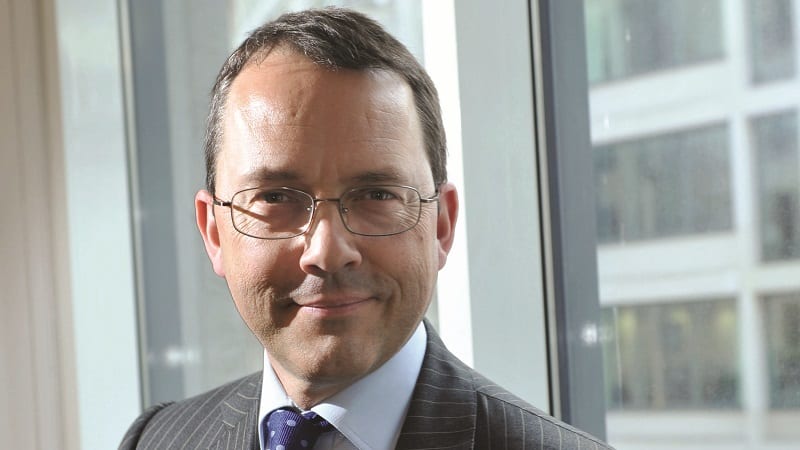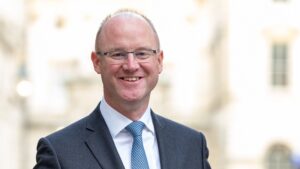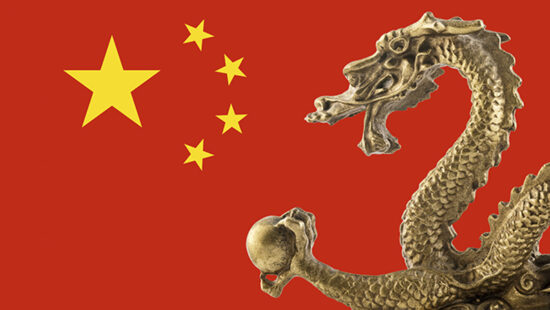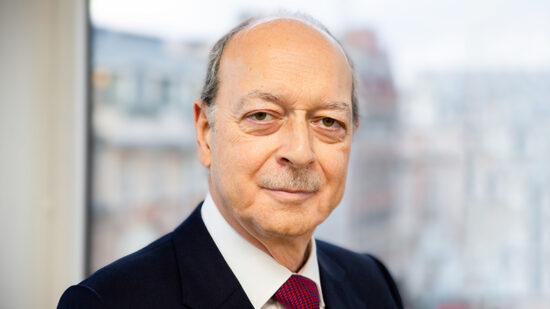The ‘investment clock’ concept is central to RLAM’s head of asset allocation Trevor Greetham’s strategy, allowing for a nimble approach to tactical allocation against a backdrop of unprecedented political and economic uncertainty.
For the entirety of Trevor Greetham’s career, never has he had to invest against such an uncertain political backdrop as as we are witnessing in the UK today.
The possible outcomes of Brexit – no deal, a second referendum that means we remain in the European Union or some transitional arrangement with regard to exiting the bloc – present “about a 30% range of where the pound could move”, says Greetham, with, at time of writing, no one option a front runner.
As a result, the head of multi-asset at Royal London Asset Management (RLAM) has adopted a more defensive stance. “Now is not a time to be trying to predict outcomes,” he says. “It’s about hedging out risk.”
UK equities are about 70% exposed to international earnings, he says, while UK property is more domestically linked, so the headwind will simply change direction, depending on the UK’s political fate. As such, Greetham’s UK equity exposure is currently fairly low, relative to his more bullish past, despite a few buying opportunities he took advantage of earlier this year.
However, he stresses things were bad enough before the Brexit vote. “The UK has been one of the world’s worst equity markets over the past 10 years, before and after Brexit. Our underweight there is more to do with substandard earnings revisions and poor momentum of the market,” he says.
Time sensitive
Underpinning Greetham’s investment approach is the concept of the ‘investment clock’, which maps the relative performance of different asset classes at various stages of the economic cycle onto a clock face.
It is an idea he developed in the 1990s when he worked at Merrill Lynch. Greetham has been evolving this model, first floated in the 1930s when the Evening Standard ran an article discussing whether it was the right time to buy a house in London, throughout his time at Merrill Lynch, during the next 10 years he spent at Fidelity and the past three years at Royal London.
“Most people will write around the outside of the clock things like ‘early cycle’, ‘mid-cycle’, ‘late cycle’, ‘recession’,” he says. “But they don’t really have any way of defining where we currently are.
“I realised in the 1990s that if you track growth cycles and inflation cycles, it’s a combination of the two that tells the ‘time’.
“If growth is strong, that doesn’t mean you’re at the end of a business cycle if inflation is falling; it can go on for many years. But if growth is strong and inflation is rising then you are into the late cycle and central banks will start to raise interest rates to choke off the growth.”
It is this model Greetham and his seven-strong team use to run £65bn across Royal London’s pension assets, its governed funds and RLAM’s range of six risk-rated Global Multi Asset Portfolios, or GMaps. Ranging from RL GMap Conservative, which only invests in fixed income or cash, to RL GMap Dynamic at the other end, which only invests in equities, the middle four portfolios (Defensive, Balanced, Growth and Adventurous) invest in the full gamut of asset classes, adhering to the same underlying asset allocation preferences, executed in different proportions to fit their intended risk profiles.
This is then overlaid with tactical asset allocation calls, where more nuanced decisions are applied, and regional exposures are dialled up or down according to the team’s combined thinking.
The clock is susceptible to “mini-cycles” but largely rotates from recession to recession, whereas we are now amid the second-longest economic expansion witnessed in the US since the 1850s. “It’s been nine years already and if it goes on another year, it will be the longest ever,” says Greetham.
Today, we are in the ‘stagflation’ quadrant, where, according to Greetham, we have been since July. This is typically not a good stage in which to own equities, and he has reduced his exposure accordingly.
“As of two weeks ago, the equity position we had at broad asset class level was the most neutral I’ve been in years. I’ve been overweight equities continuously since 2012, until early this summer, when we moved back to pretty much neutral.”



GMap Balanced Fund to 30 September, has a 13.9% in a UK All Share Tracker, and 10% in Royal London Property Fund, reflecting his aforementioned UK “hedge”.
Greetham warns being nine years into a business expansion, with rising inflation and interest rates, is cause for concern. But he believes any recession risk is not imminent but may bite after next summer when president Trump’s fiscal stimulus starts to fade.
Each GMap fund is measured against a composite index representing its risk profile. The portfolios tend to sit around the neutral range, in terms of strategic asset allocation, but this year has prompted an atypical level of activity.
“We take investor sentiment really seriously and investors are prone to panics usually two or three times a year. We saw those two big panics in January and then again in March/April, and used those opportunities to buy into equities. We were almost maximum overweight in April and by July we were back down to neutral.”
Cost-centric
That nimble approach to tactical asset allocation is one of the reasons Greetham likes to use passive funds for equity exposure. Cost is the other main driver.
With a target ongoing charge figure of 60 basis points on the range, Greetham likes to use active funds to express where he thinks they should be, with market instruments – ETFs, futures and forwards – to express where he thinks they can be.
“I use passives to keep costs down but in fixed income, particularly credit, I think you should be active. You shouldn’t buy more of an issuer just because they issue more. Similarly, on the physical property side, I believe you have to be active.”
The GMap funds are largely fettered, with only rare instances steering him beyond his colleagues. While not set in stone, he prefers to keep things in Royal London’s hands, for cost and transparency reasons.
“We have full visibility of all the holdings, plus, from a risk management point of view, we know exactly what’s going on and we can speak to the portfolio managers because they sit a few yards away.
“I’m not keen on analysing and managing other fund managers. I think to do that properly you need a very large team, which adds internal costs and you end up adding layers of cost to the product as well.”
Default risk
Mindful of recession risk, he has been increasing his short-duration fixed income exposure, with high yield his favoured asset class. GMap Balanced, for example, contains four short-duration RLAM fixed income funds, in varying degrees: RL Investment Grade Short Dated Credit; Short Duration Gilts; Short Duration Global Index Linked; and Short Duration Global High Yield.
Of high yield bonds, Greetham says their performance depends on whether the US and global economy are in a normal expansion or recession. “Right now, we think the imminent recession risks are rather lower than the market believes,” he says.
He explains that with short-duration high yield, default levels matter more acutely, while investor sentiment and expectations are less prevalent. “You’ve got lower credit rating borrowers who are redeeming the bonds, often within the next 12 months. Your performance is about actual defaults – did you get the money back or not?”
Elsewhere, while still underweight the benchmark, Greetham has been upping his commodities exposure, also using ETFs, bearing in mind the ‘two-speed’ economy being driven by the US and China.
“As the Chinese are easing policy, we’re starting to buy commodities again because prices could move higher.”
At 30 September, the GMap Adventurous Fund has 4.1% in a commodities ETF, while a Japan, Asia ex Japan and Vanguard FTSE emerging market ETF comprise 2.8%, 2.6% and 2.5%, respectively.
“This year we have a situation in which the US economy is strong but the Chinese economy is slowing down. It is a bad combination for both emerging markets and industrial commodities such as copper. As China slows, commodity prices will generally drop, which then hits the export performance of the emerging economies.”
Explaining his emerging market underweight, he says commodities “are part of that same story”, while also offering a degree of geopolitical hedge. However, the asset class is proving to be complex.
As China begins to cut rates to stimulate its economy, offsetting any damage from the potential trade war, he says things could move fairly quickly around the clock.
“My prediction is we risk going into overheat because if we move into recovery, inflation will rise even more, especially if China recovers and pushes commodity prices up again. Then you will really have some rate hikes on your hands.”







